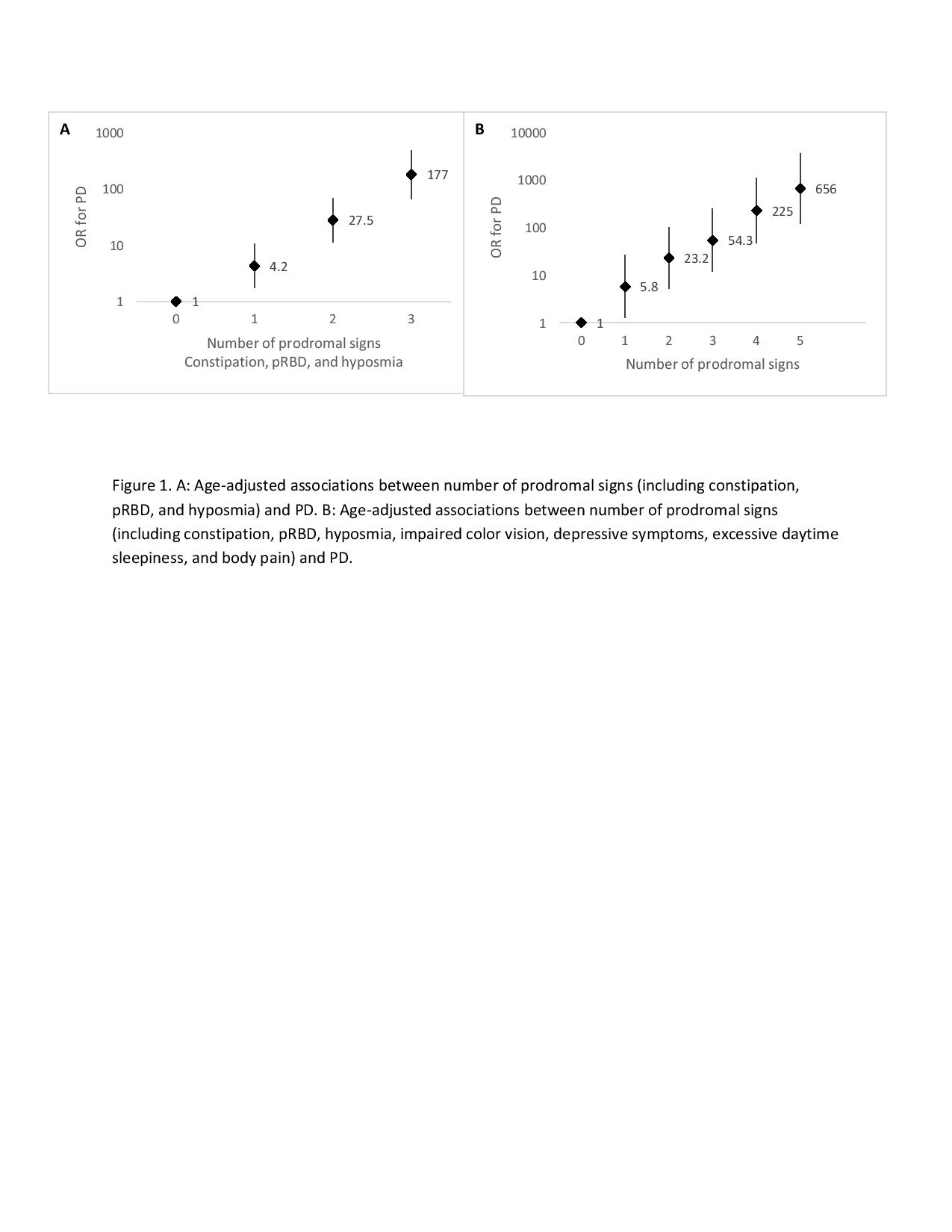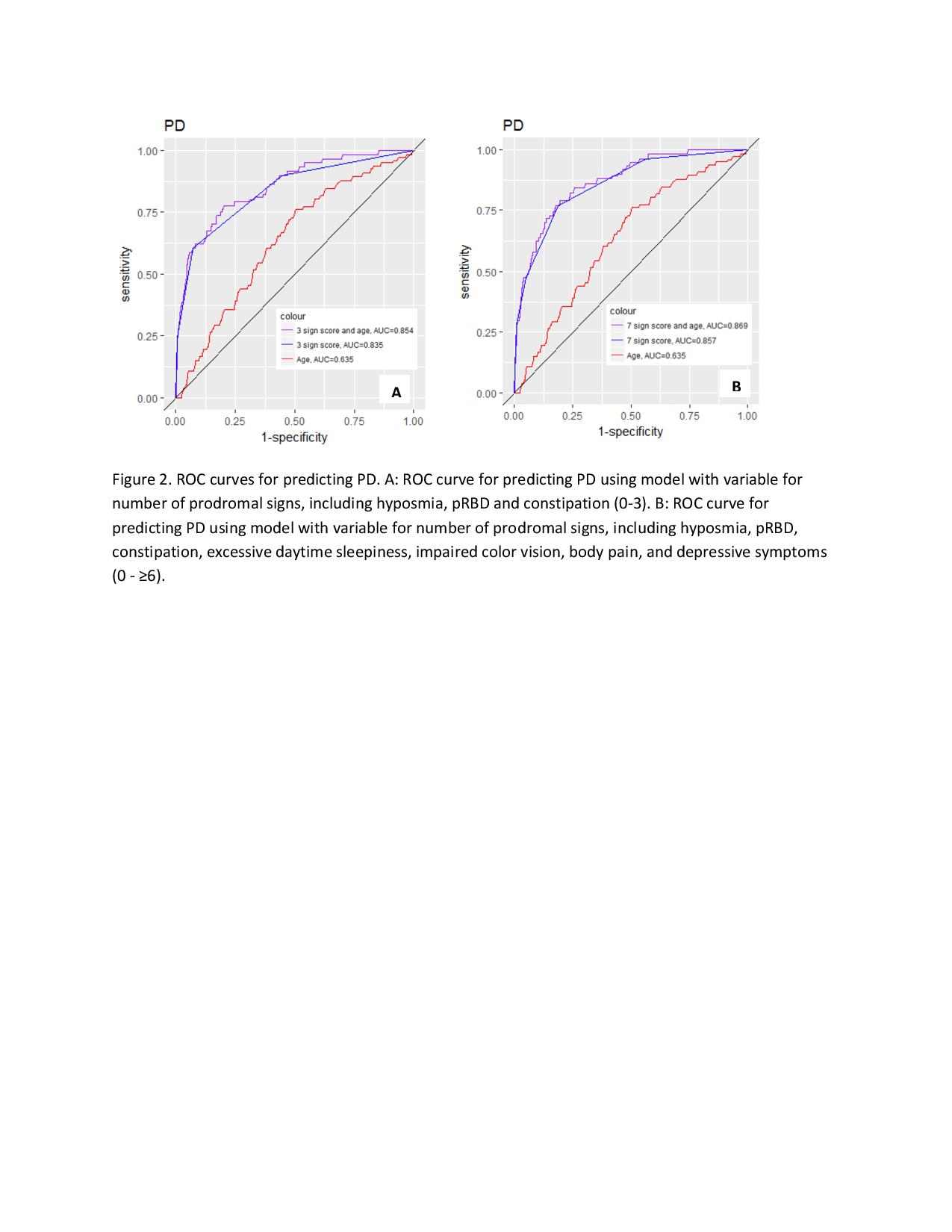Session Information
Date: Sunday, October 7, 2018
Session Title: Epidemiology
Session Time: 1:45pm-3:15pm
Location: Hall 3FG
Objective: To identify how prodromal features interact to determine Parkinson’s disease (PD) risk in women.
Background: The neuronal loss that leads to PD progresses insidiously over many years before motor signs appear. Prodromal PD is characterized by non-motor symptoms, including REM sleep behavior disorder (RBD), hyposmia, constipation. Several studies have attempted to develop protocols to identify prodromal PD, but the optimal screening strategy is unclear.
Methods: We are conducting a study of prodromal PD among participants in the Nurses’ Health Study, a cohort initiated in 1976 of >120,000 women who have been followed via biennial self-report questionnaires for several health outcomes, including PD. This study includes 36,205 women who completed a 2012 questionnaire with questions on constipation and probable RBD (pRBD). We sent follow-up mailings in 2015, including the Brief Smell Identification Test, a color vision test, and a questionnaire regarding other prodromal features, including excessive daytime sleepiness, depressive symptoms, and body pain, to all women (N=14,146) with pRBD (7.1%) or constipation (35.1%), 4,460 women without pRBD or constipation, and 164 PD cases. 14,169 women, including 72 PD cases, returned the 2015 assessments and were included in the following analyses. We used logistic regression to estimate age-adjusted ORs for PD according to the presence of prodromal features. To account for our sampling strategy, we used inverse-probability weighting to weight women by the inverse of their probability of being selected into the second stage of screening, conditional on pRBD and constipation status. We plotted receiver operating characteristic (ROC) curves for scores based on number of prodromal signs for classifying PD.
Results: Compared to women with no prodromal signs, women with constipation, pRBD and hyposmia (0.8% of cohort) had an age-adjusted OR of 177 (95% CI 65.9-475) for PD (figure 1). The odds of PD rose further with the presence of additional signs. Comparing women with ≥5 signs (0.2% of cohort) versus none, the OR for PD was 656 (95% CI 121-3572). ROC curves for PD based on number of prodromal signs are shown in figure 2.
Conclusions: Concurrent constipation, pRBD, and hyposmia are strongly associated with PD in women. Screening for pRBD and constipation, followed by olfactory testing, could provide an efficient way to identify women likely to be in the prodromal phase of PD.
To cite this abstract in AMA style:
K. Hughes, X. Gao, J. Baker, C. Stephen, I. Kim, L. Valeri, M. Schwarzschild, A. Ascherio. Prodromal features of Parkinson’s disease in women [abstract]. Mov Disord. 2018; 33 (suppl 2). https://www.mdsabstracts.org/abstract/prodromal-features-of-parkinsons-disease-in-women/. Accessed December 22, 2025.« Back to 2018 International Congress
MDS Abstracts - https://www.mdsabstracts.org/abstract/prodromal-features-of-parkinsons-disease-in-women/


